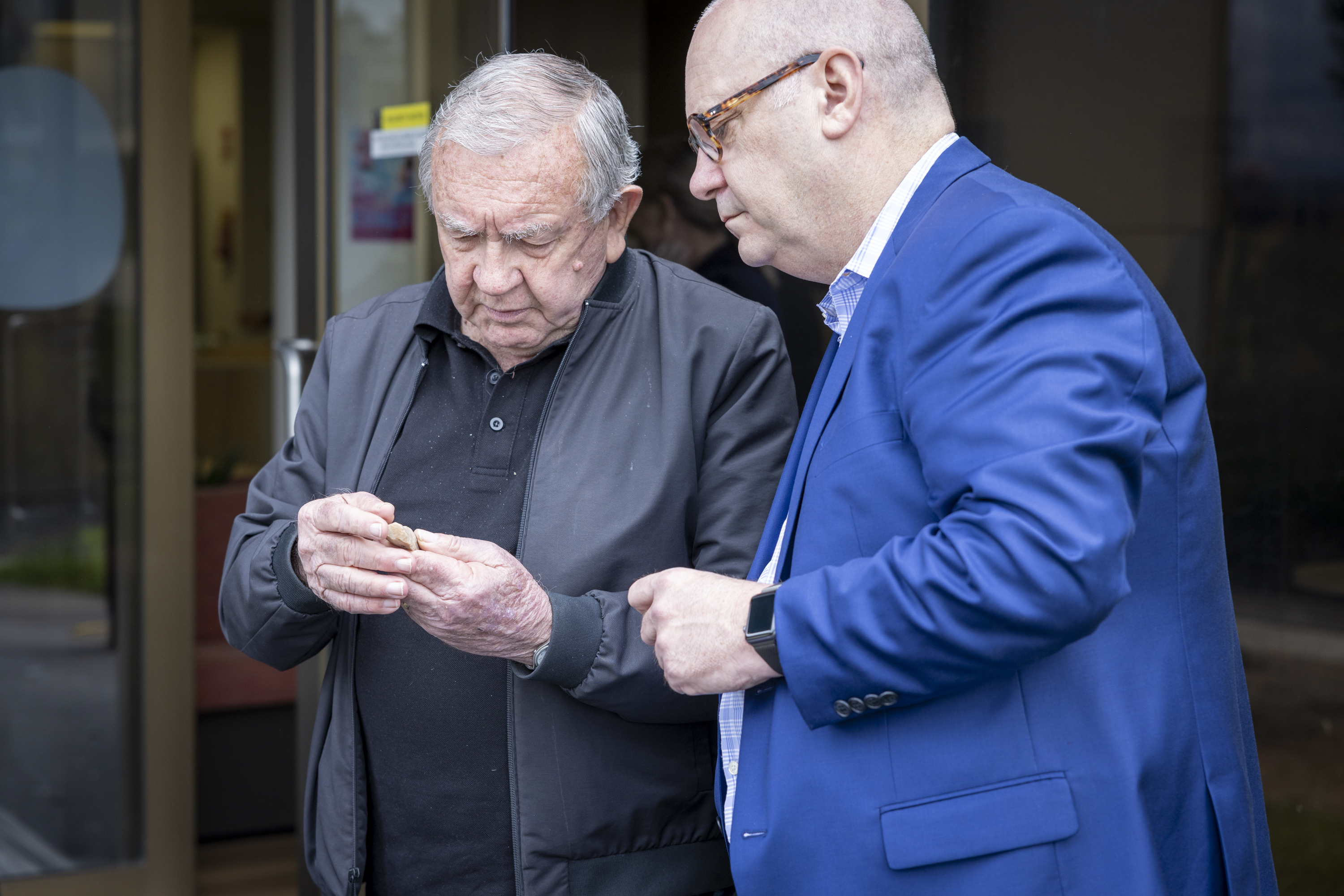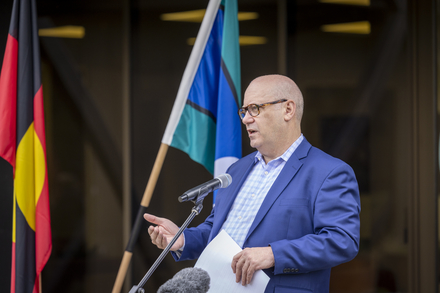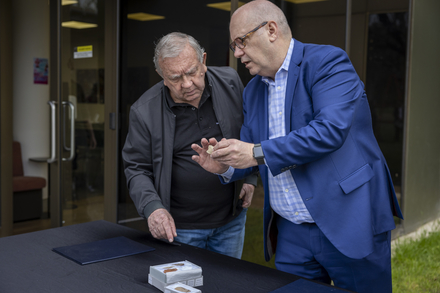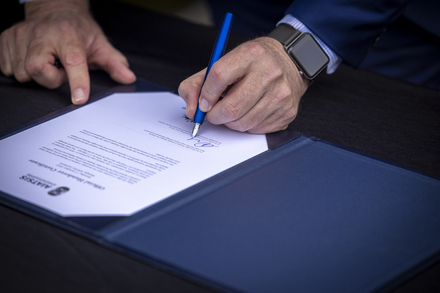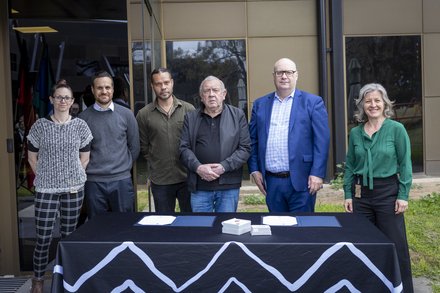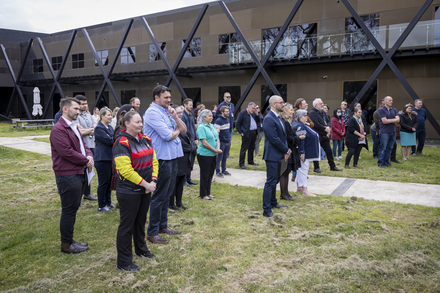Five stone tools, originally gathered in Victoria by non-Indigenous collectors but later identified in a museum in Israel, returned to the care of the Wurundjeri Woi-Wurrung Cultural Heritage Aboriginal Corporation during a ceremony at AIATSIS today.
The return of these tools is the result of over four years of work by AIATSIS. Discussions with the Israel Museum in Jerusalem from 2019 onwards led to the return to Australia in 2020 of over 1800 objects in the Carl Shipman collection held there. Months of research followed to confirm the source communities for the returned objects.
This handover to Wurundjeri Woi-Wurrung community is the first parcel of objects from the Carl Shipman collection to go back into the care of the relevant community.
AIATSIS leads the Return of Cultural Heritage program that seeks the repatriation of cultural heritage materials held in collections outside of Australia.
It was in the 1970s that Mr Carl Shipman, a refugee from Europe who made a successful life in Australia, donated the collection that included these stone tools to the Israel Museum. He had built this and other collections over decades.
AIATSIS learned of Mr Shipman’s collection in 2019, after a delegation of Indigenous representatives visited the Israel Museum. Collaboration between AIATSIS and the museum led to the museum’s offer to return the collection to Australia to begin the process of identification and eventual return to the source communities. Representing the community at today’s event was Wurundjeri Elder Ron Jones.
‘I don’t call them artefacts I call them I call them the best Aussie tools ever made,’ Mr Jones said.
‘They last for thousands of years.
‘The significance of finding just one tool proves that our people, over thousands of years, have passed through that area following in their ancestors’ footsteps. The tools tell us that our people were occupying this land. It is very significant that a lot more of our younger generation want to learn about stone tools and things like that.’
The AIATSIS CEO, Craig Ritchie, speculated on how long the stone tools may have been absent from their community.
‘Today we are completing unfinished business from many, many decades ago,’ Mr Ritchie said. ‘It may be that these five stone tools have been away from home, away from Community, for a century or even longer.
‘Each of these five stone tools, as with some others in the Carl Shipman collection, is inscribed with the location from which it was sourced. However, there was little other information available.
‘Over several months since the tools arrived in Australia my colleagues conducted extensive research to confirm the source community.
‘These are tools that your ancestors once held, once used in their daily lives. They link today’s Community directly to those ancestors. The story of the stone tools is a part of the story of the First Nations peoples of this continent. At AIATSIS, our task is to help tell that story.
‘In this work in returning objects, we aim for respectful and productive relationships with those communities whose material is held in collecting institutions overseas. But we also aim for respectful relationships with the museums and other collectors who hold those materials. From respectful relationships come results that benefit all.’
While in Canberra, Wurundjeri Woi-Wurrung Elder Ron Jones also took the opportunity to explore material related to Wurundjeri country and community in the AIATSIS Collection.
AIATSIS Media enquiries
Commsmedia@aiatsis.gov.au
0476 843 522

